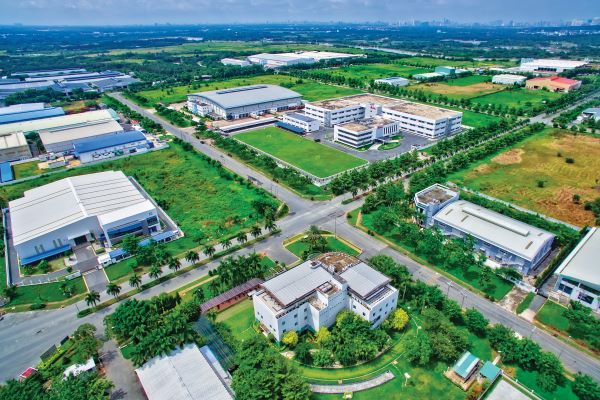
Image credit - Luongviethoang.hcm
Apple Manufacturers’ Exodus From China Sparks Manpower Shortage
It seems to be China’s turn to be on panic mode when manufacturers shift their eyes outside, especially towards Southeast Asia.
Recently, Apple decided to manufacture the iPhone 16 series in India, marking a significant shift in its supply chain strategy. This move comes amid escalating tech tensions between the U.S. and China. Earlier this year, Microsoft Corp. urged its China-based AI team to relocate, highlighting the increasing strain on tech companies operating in China.
However, Apple is not looking at just India, it was toying with the idea of Indonesia in April this year. Last December, Apple is working with China’s BYD, a key iPad assembler, to move new product introduction (NPI) resources to Vietnam. In other words, Apple is spreading its presence across Asia as some form of safety net if China’s relations gets more intense.
For Apple suppliers in Vietnam, the end of summer is recruitment season. In the months ahead of the busy holiday shopping rush, companies like Luxshare and Foxconn try to fill thousands of permanent and temporary assembly jobs, building products like AirPods and iPads, Rest of World reported. Competition for these jobs was once fierce. In the past couple of years, as more manufacturers relocate from China to Vietnam, the benefit of choice has shifted to the workers.
“There are more factories competing for the same pool of workers, and so many have had to increase perks and find ways to attract workers,” Tong Diep Anh, marketing director at Viec 3 Mien, a recruitment company for Apple manufacturers, told Rest of World. “In the past, when demand for work was high, workers had to pay money to get a job. Now that the job market is saturated, workers have a choice.”
Putting Into Context
Trade tensions have spooked several businesses including HP, leading to relocating production facilities out of China. This time, Southeast Asia is the manufacturing hub of choice, according to the Nation, Thailand.
Corporations such as Samsung, Nike, and Adidas have reportedly moved substantial portions of their production to countries like Vietnam and Indonesia. Samsung relocated its smartphone manufacturing to Vietnam, where it now contributes significantly to the country’s GDP.
Nike has shifted a considerable part of its footwear production to Vietnam as well, where over half of its shoes are now made. Meanwhile, Adidas has reduced its reliance on Chinese manufacturers, turning to alternatives in Southeast Asia. Even Apple is looking to Indonesia for its manufacturing facility.
Vietnam, Indonesia, and Thailand are among the key destinations attracting these relocations, offering lower labour costs, expanding manufacturing capabilities, and favourable trade agreements. Hyundai Motor Company will invest THB1 billion (US$28 million) to set up a facility to assemble electric vehicles (EVs) and batteries in Thailand, the country’s Board of Investment (BOI) said on 7 August 2024, according to Bangkok Post.
These moves are part of a broader shift as companies seek to mitigate risks associated with over-reliance on China and leverage the growing economic potential of Southeast Asia. Tensions over Taiwan pushing Hewlett-Packard to move a significant proportion of PC production from China, Nation Thailand quoted Nikkei Asia.
The mass exodus extends beyond Apple. US-based IT giant Hewlett-Packard (HP) is looking to shift more than half of its PC (personal computer) production away from China to reduce potential geopolitical risks. HP also plans to set up a backup design hub in Singapore, the report said.
Vietnam’s Manpower Dilemma
Vietnam is the most popular location for tech manufacturers wishing to diversify away from China to avoid U.S. tariffs. The country registered large foreign direct investment in new projects and expansion in the fields of semiconductors, energy, component manufacturing, and electronics in the first eight months of this year, according to the Ministry of Planning and Investment.
Apple suppliers and their vendors have notably increased their presence in Vietnam, with Luxshare, Foxconn, and Goertek all opening up new factories. In 2015, Vietnam hosted just eight Apple suppliers; by 2023, the country had 35 suppliers assembling AirPods, iPads, and MacBooks. Yet, Vietnam appears to be the country starved for skilled labour.
One of Vietnam’s primary selling points for tech manufacturers is its relatively cheap and plentiful labour force. Manufacturing wages in Vietnam are less than half those in China, even as real minimum wages grew by 11.3% per year in the decade from 2010 to 2019, among the fastest in Asia. In July, Vietnam raised the monthly minimum wage by 6% to 4.96 million dong ($200). However, these wages are often insufficient, and workers rely on overtime to make ends meet.
What You Missed:
HP Eyes Thailand In Plans To Shift Production From China
Samsung Plans To Invest US$1.8 Billion More In Vietnam For OLED Manufacturing
ViMUT Hospital Opens Facial Contouring Centre To Meet Thailand Cosmetic Surgery Demand
OpenAI Says New ChatGPT Model Can Reason And Think ‘Much Like a Person’
Can Laos Become Southeast Asia’s Next Manufacturing Hub?
Research Reveals Almost Half Of FDA-Approved AI Medical Devices Lacked Clinical Validation
AI Software Tool Aims To Spot Early Signs Of Dementia From Brain Scans
Malaysia Bigfoots Thailand As Foreign Investors Return
New Growth Drivers In Manufacturing Boost China’s Industrial Output In July
Vietnam Manufacturing Output Surges to a 13-Year High
WANT MORE INSIDER NEWS? SUBSCRIBE TO OUR DIGITAL MAGAZINE NOW!
CONNECT WITH US: LinkedIn, Facebook, Twitter
Letter to the Editor
Do you have an opinion about this story? Do you have some thoughts you’d like to share with our readers? APMEN News would love to hear from you!
Email your letter to the Editorial Team at [email protected]
